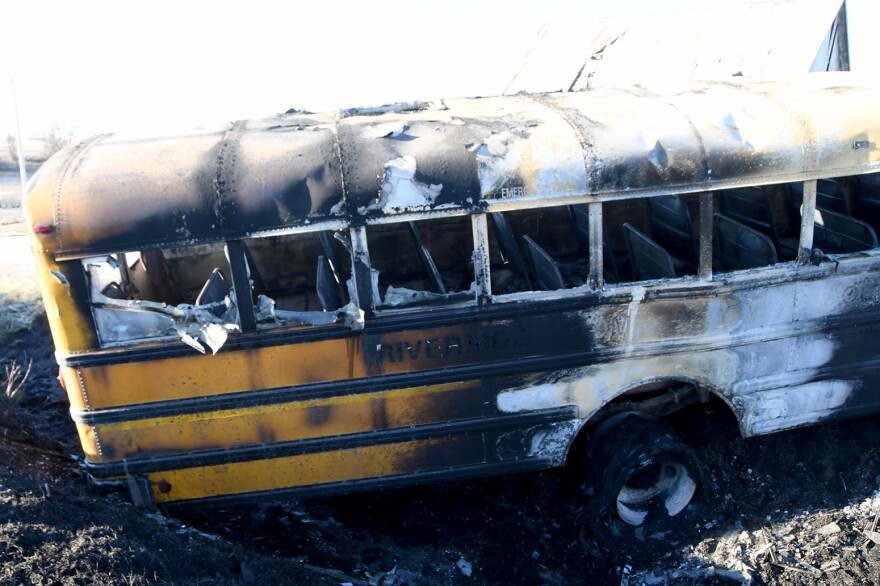After reviewing the case of a school bus fire in western Iowa, a federal safety board is calling for changes to fire safety standards that date back to 1971. The National Transportation Safety Board said buses are overdue for an upgrade to protect students from fires, but also said school districts should follow stricter rules to ensure drivers are healthy enough to take action when there is an emergency.
In December 2017, 74-year-old bus driver Donald Hendricks backed across a gravel road in rural Oakland after picking up 16-year-old student Megan Klindt. The rear wheels fell into a ditch. As Hendricks tried to drive out, the engine’s turbo-charger overheated and started a fire that spread throughout the bus. Hendricks and Klindt both died.
Investigators aren’t sure why neither escaped but concluded that one of the likely causes for the accident is that Hendricks wasn’t physically able to reach an emergency exit. He had back problems, investigators said, and was scheduled to have surgery. NTSB Chairman, Robert Sumwalt said the Riverside School District should have known about his condition and taken him off of the route.
“This 74-year-old driver is no longer here. He’s not going to make that same mistake,” Sumwalt said at a hearing Tuesday. “So we’ve got to send the message that, by God, if you’re a school district you have a responsibility to provide the oversight that those kids deserve.”
Riverside policy does require drivers to have regular physicals. In a brief statement, superintendent Timothy Mitchell said the district “appreciates the work of the National Transportation Board in this matter. The district has fully cooperated in the investigation. Our top priority is the safety of our students and staff.”
The NTSB also concluded that school buses are not designed well enough to put out fires when they start, or to stop fires and fumes from spreading beyond the engine compartment.
As part of a list of recommendations, the board called for school buses nationwide to be retrofitted with devices that can automatically extinguish engine fires.
“If these recommendations are acted upon, it will result in fire safety improvements in new school buses for the first time in decades, since 1971,” Sumwalt said.
The NTSB does not have regulatory authority to require fire suppression systems on school buses, so another agency — such as the National Highway Traffic Safety Administration — would have to make it happen.
According to the NTSB, school bus fires happen at a rate of about one per day.





